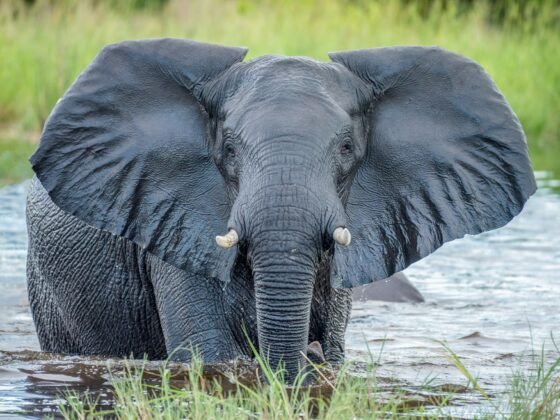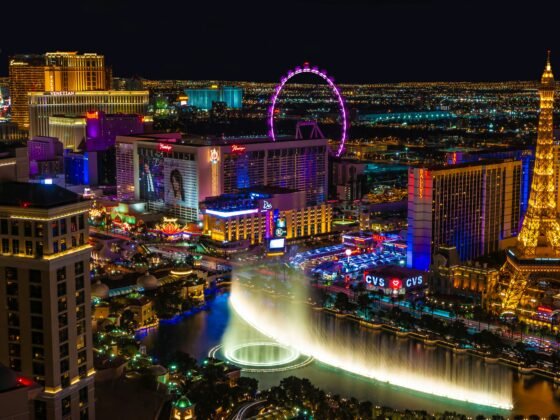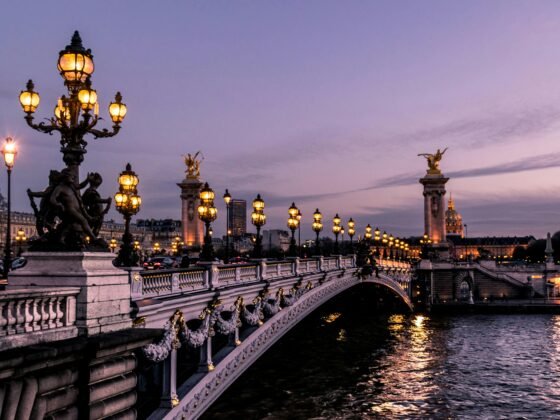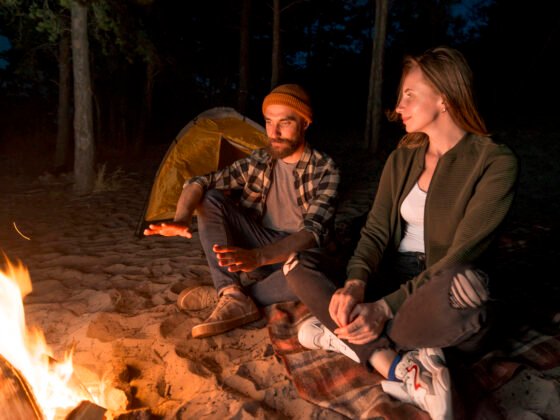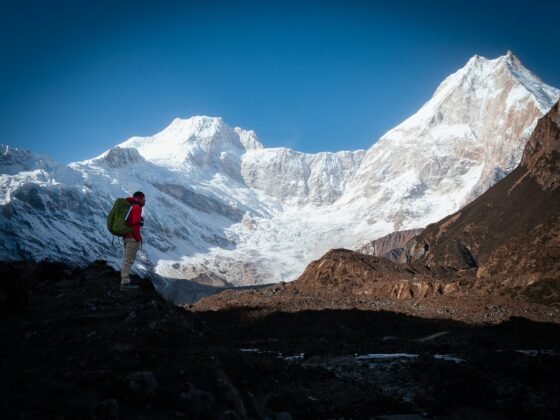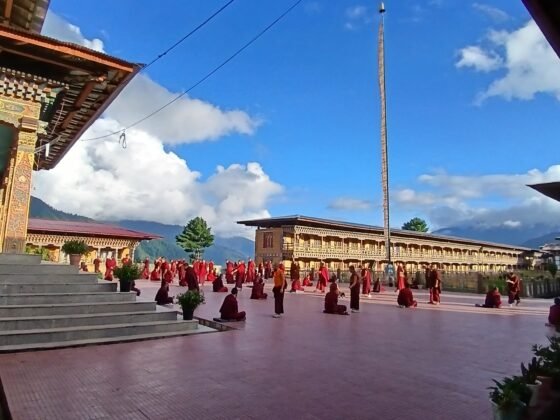Tanzania Adventure Travel Guide: Ideas and Inspiration
PureTravel says: "To many the word Africa elicits images of roaming wildlife, robust native culture and rolling savannah. If any one place in Africa embodies these popular concepts, it’s Tanzania. Home to Mount Kilimanjaro and the Serengeti, Tanzania also contains the oldest human bones ever found, and is believed to be the birthplace of humanity. Journeys here offer unparalleled wildlife viewing, exhilarating climbing and thrilling scuba diving off the coast of Zanzibar. And the country's palm-fringed beaches are famous for their beauty and brilliant whiteness.”
-----------------------------------------------------------
Holiday Highlights
Safaris and Wildlife - Home to the Serengeti, Tanzania is Africa’s most bio diverse country and a top destination for safaris and wildlife watching. You can expect to see the Big Five in Tanzania – the African elephant, lion, leopard, rhino and Cape buffalo. It’s also a birder’s paradise, with over 1100 avian species on record. There is a whole range of safari options to choose from. There is rough camping in National Park camping areas to luxury mobile camping which gets you to little-visited corners of the Parks. There are private and exclusive lodges with only a few private rooms and large lodges in the more famous locations.
Walking & Trekking - Tanzania offers trekkers an array of trek routes with spectacular scenery, most notably routes to the top of Mount Kilimanjaro, Africa’s highest peak. The Rongai Route is the longest and most scenic way to the mountain’s top. The climb is not very technically difficult, making it an impressive but achievable goal for non-serious climbers.
Another superb option is to trek across the Serengeti plains with Masai guides. Exploring the bush on foot is an entirely different experience than wildlife viewing from a vehicle. Visit the cradle of humanity, skirt the Ngorongoro Crater, and rest easy along a quiet stretch of the Lake Victoria shoreline or under the big Serengeti sky. Depending upon the season, it’s also possible to watch the annual migration of over one million wildebeest across the grassland.
Mountain Biking - For those who don’t care to be carted around in a 4WD vehicle but are looking for something faster than foot travel, Tanzania offers some remarkable bike safaris. The combination of Kilimanjaro and neighbouring peaks with the vast flatness of the Serengeti makes for an incredible range of biking terrain, and trips suitable for any skill level can be arranged. Some of the best biking itineraries are the routes through the Great Rift Valley and from Mount Kilimanjaro to Ngorongoro Crater. The ambitious can start out on Zanzibar’s tropical coast and cycle to the foot of Kilimanjaro, then trek to the peak.
Culture & History - Tanzania is home to over 100 tribal groups, speaking over 100 distinct languages and it's this diversity that has perhaps contributed to the country's peace and stability, especially when compared with neighbouring countries. It also makes for very different cultural experiences in different parts of the country. While a handful of tribes, including the nomadic Maasai, have resisted modernization, Tanzania is also home to bustling Dar es Salaam, home to over 2 million people. While many travellers view Dar as a place to travel through rather than to, a day at the National Museum or Kariokoo Market can be well spent indeed. A stay in Dar is an opportunity to see a very different East Africa than the wild safari imagined by most Westerners.
If the city isn’t your thing, then you can always arrange cultural visits with one of the more traditional tribes, such as the Maasai or Hadzabe. Learn traditional skills, meet local craftsmen, or even try your hand at drumming.
Tanzania’s most fascinating cultural aspect may be its status as the likely birthplace of our species. A visit to Olduvai Gorge in the Ngorongoro Conservation Area, where the skeleton of our early ancestor, Australopithecus Boisei, was discovered, is a must for those with an interest in this subject. Olduvai Gorge hosts a palaeontology museum, and is also a good starting point for treks in the Ngorongoro area.
SCUBA Diving - Within Tanzania, diving holidays are centred in island-based diving resorts in Zanzibar. White sand beaches and crystal clear waters make coastal Tanzania the place to be, in the water and out. December through to February are the best months for diving, as you can expect to see manta rays. The waters around the Zanzibar islands generally make for very easy diving, suitable for beginners and having lessons.
-----------------------------------------------------------
When To Go
While Tanzania is very close to the equator and therefore has a fairly constant climate year-round, the rainy season in April and May is best avoided. A second wet season, known as the 'short rains' occurs in November. Safaris in the northern part of the country can still be very pleasant at these times, but activities in lowland, tropical areas become rather less agreeable.
-----------------------------------------------------------
Top Tips
- Do not go trekking alone, and be sure that others are aware of your general itinerary.
- Be conscious of the hot, dry climate, and stay well hydrated to avoid heat-related illnesses.
- If trekking, use a responsible tour operator who follows the correct guidelines on the use of porters.
- Malaria is a risk nearly everywhere in Tanzania. Be specific with your doctor about your travel plans to ensure that you receive the right anti-malarial medication.
- On safari, never leave you vehicle. Inside you are quite secure but once in the open the animals will recognise your silhouette as that of an animal and a source of potential food.
- Mount Kilimanjaro - Marangu Route Trek
- Mount Kilimanjaro - Rongai Route Trek
- The Northern Circuit – Manyara, Tarangire, Serengeti, Ngorongoro.
- The Southern Circuit – Selous, Ruaha
- Gorilla and Chimpanzee safari
- Oldinyo Lengai volcano and Lake Natron trek
- Great Rift Valley Cycling Trip
- Monduli Mountains to Lake Natron Cycling Trip
- SCUBA Diving off of Zanzibar and Mnemba
- Cultural visits with the Maasai people
-----------------------------------------------------------
Holidays In Focus
Safari Tanzania and Wildlife - Tanzania is the most bio diverse country in Africa, with 364 mammal species and over 1100 birds. It’s home to all of the beloved Serengeti mega-fauna that springs to mind when you think “safari.” Nearly a quarter of the country is officially protected, and the wildlife has thrived under the protection. On a guided safari, you can reasonably expect to see the Big Five – elephant, lion, leopard, rhino, and Cape buffalo. Eco-tourists are also amazed by the annual migration of over one million wildebeest across the grassland.
The most famous safari route in Tanzania is the Northern Circuit. Normally taking one week, it visits Lake Manyara, Tarangire National Park, the Ngorongoro Conservation area (including the Ngorongoro Crater) and the Serengeti.
The best time to visit the Serengeti depends on what you’d most like to see. January is a good time to see massive herds of wildebeest, zebra, and gazelle, but February is an exceptional viewing opportunity for predators, when they are drawn by newborn wildebeest foals. July through October is considered to be an excellent time for a safari.
It’s very important to plan appropriately for the Serengeti climate. Pack light, washable clothes, a sunhat, sunglasses, and good sunscreen. Don’t forget field guides and extra film, but apart from necessities, it’s best to pack lightly. To optimize your experience, read up on Serengeti wildlife and learn a little Kiswahili before your trip.
A Southern Circuit also exists, visiting the largest of the parks in Selous and Ruaha. These areas are much less crowded but the game-viewing equally spectacular. For those who wish to experience something different, perhaps take a gorilla safari in the far west of the country where you can also visit the chimpanzees,
Trekking and Climbing - With its high but accessible mountains, enormous lakes, and rolling savannah- is a trekker’s paradise. Whether you’re dreaming of a snapshot of yourself at Kilimanjaro’s summit or a hike alongside a zebra herd, Tanzania offers incredible opportunities.
Trekking the rich and diverse landscapes spans the full gamut, from day trips out of the local hotels to backcountry treks combining rustic camping. Upscale picks include the luxury safari lodges of the Serengeti, especially in the Ngorongoro area. Safari lodges will be happy to help arrange walking and wildlife viewing activities.
The main trekking activity in Tanzania is to follow a route up Mount Kilimanjaro. The Marangu route is the most popular, as it is the easiest climb and trekkers can stay at a series of huts strung along the route. The Rongai Route, less well-travelled, is the longest way to the mountain’s top, and passes through more remote terrain. Compared to other mountain ascents, the various Kilimanjaro ascents are not very technically difficult, and reaching the summit is an impressive but achievable goal for non-serious climbers.
The other best option for trekking is to embark on a walking safari in the Serengeti. The word ‘Serengeti’ derives from the Maasai word ‘Siringet,’ meaning ‘endless plain’, and on foot the grassland really does feel endless.
Immersion in the Serengeti ecosystem, one of the oldest in the world, is a memory you will carry away from your trip and treasure forever. Package tours can last anywhere from a few days to multiple weeks, and usually include some combination of hotel stays and camping. Depending upon your outfitter and the accessibility of your trek route, your equipment may be carried by porters or by a 4WD truck. Due to the abundance of wildlife, including large wild animals which may be dangerous or unpredictable, it is inadvisable to trek in the Serengeti alone. Local guides, including Maasai tribesmen, are available for hire to lead trekking expeditions.
Popular destinations for Serengeti treks include trips to the Ngorongoro Crater, Olduvai Gorge, Ol Doinyo Lengai volcano and Lake Natron. These points of interest are located outside of the officially designated Serengeti National Park, but the Ngorongoro conservation area is still a part of the greater Serengeti ecosystem. The Ol Doinyo Lengai volcano is notable for being the only active volcano in the world to erupt lava which is carbonatite rather than silica-based. This makes for black, extremely fluid lava, similar in appearance to oil. Nearby Lake Natron is notorious among birders for the 2.5 million Lesser Flamingos which breed there every year, a fantastic spectacle.
Culture and History - While the capital of Tanzania is Dodoma, the coastal city and former capital, Dar es Salaam, remains the country’s economic and cultural hub. Dar is one of East Africa’s most important trading centres, and the mixture of native African, Arabic, and South Asian influences makes for a rich and complex cultural atmosphere. As a destination, Dar ranks far below Zanzibar and the northern safari regions. Still, the city’s charms are considerable, and time there can be very well spent. Dar is the only part of Tanzania which can be said to have a real nightlife, and a number of dance clubs offer music ranging from native and Congolese styles to Western dance and hip-hop. The city is also a great place to pick up locally produced crafts. The Mwenge Carver’s Market is the area’s principal crafts market.
For a very different experience, get out of the city and tour a village for a day. In addition to meeting and spending time with locals, you can learn from native craftsmen, see how native Tanzanians make a living, and participate in singing and dancing. Longer home stays, either in villages or with tribes such as the Maasai, are also available.
If your trip takes place in February, the Sauti za Busara Swahili Music Festival on Zanzibar is highly recommended. It features a fusion of traditional and modern styles, from traditional drumming and dancing to Swahili rap music.
Scuba Diving - With amazingly clear, turquoise waters and a profusion of marine life, Zanzibar is a memorable diving destination. The area is known for the ease of diving around the coast as well as for the coral reefs and diversity of life you’ll likely encounter. Experienced divers can rent equipment and arrange trips for a reasonable price, while dive resorts and centres on the islands are eager to set up lessons for the uninitiated. The greatest concentration of dive centres is in Zanzibar. “One Ocean – The Zanzibar Dive Centre” is consistently Zanzibar’s most highly rated and regarded dive centre.
The best time to dive is between October and March, with a higher probability of seeing Manta rays around January. While camping on Zanzibar is almost non-existent, hotels and resorts are commonplace, with accommodation to suit all budgets.
Divers agree that the Morogo and Boribo reefs are a highlight of Zanzibar diving, along with the ‘Turtles Den’ site (which lives up to its name). Aside from Zanzibar, diving around the small island of Mnemba is very worthwhile.
-----------------------------------------------------------
Classic Itineraries
-----------------------------------------------------------


